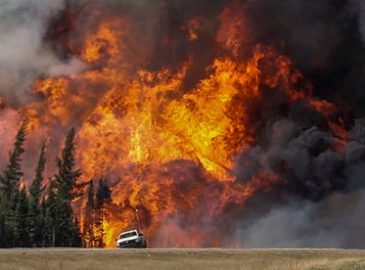During the last Ice Age, Australia, Tasmania and New Guinea formed a single landmass, called Sahul. It was a strange and often hostile place populated by a bizarre cast of giant animals. There were 500-pound kangaroos, marsupial tapirs the size of horses and wombat-like creatures the size of hippos. There were flightless birds that weighed…
ReadEnvironmental News

The Bay of Bengal’s basin contains some of the most populous regions of the earth. No less than a quarter of the world’s population is concentrated in the eight countries that border the bay1. Approximately 200 million people live along the Bay of Bengal’s coasts and of these a major proportion are partially or wholly…
Read
Ladybird books will this week publish a new title on climate change. Co-authored by the Prince of Wales, the polar scientist Emily Shuckburgh and myself, the book is intended as a plain English guide to the subject for an adult readership. Short, peer-reviewed text sits alongside beautiful new paintings by Ruth Palmer to illustrate the…
ReadIf you want to see the world’s climate changing, fly over a tropical country. Thirty years ago, a wide belt of rainforest circled the earth, covering much of Latin America, south-east Asia and Africa. Today, it is being rapidly replaced by great swathes of palm oil trees and rubber plantations, land cleared for cattle grazing,…
ReadHighways England plans to introduce Britain’s first pollution-linked speed limits to help reduce smog over Sheffield The M1 plan coincides with proposals for a £106m ‘smart motorway’ due to launch in March. Photograph: Rui Vieira/PA A proposal to impose Britain’s first pollution-linked speed limits in order to help ease smog over Sheffield is being considered…
ReadFor decades, scientists have theorized that the movement of Earth’s tectonic plates is driven largely by negative buoyancy created as they cool. New research, however, shows plate dynamics are driven significantly by the additional force of heat drawn from the Earth’s core. The new findings also challenge the theory that underwater mountain ranges known as…
ReadEarth’s 2016 surface temperatures were the warmest since modern recordkeeping began in 1880, according to independent analyses by NASA and the National Oceanic and Atmospheric Administration (NOAA). Globally-averaged temperatures in 2016 were 1.78 degrees Fahrenheit (0.99 degrees Celsius) warmer than the mid-20th century mean. This makes 2016 the third year in a row to set…
ReadA new model reconstruction shows in exceptional detail the evolution of the Eurasian ice sheet during the last ice age. This can help scientists understand how climate and ocean warming can affect the remaining ice masses on Earth. The Eurasian ice sheet was the third largest ice mass during the Last Glacial Maximum some 22,000…
ReadA dust storm that blanketed seven nations in the Middle East in late summer 2015 was caused by climate factors and unusual weather, not human conflict in Syria, concluded researchers including Elie Bou-Zeid, an associate professor of civil and environmental engineering at Princeton. Bou-Zeid took photos in Beirut, Lebanon, during the storm.
ReadThe SMAP observations are providing an unprecedented level of detailed, worldwide information on the amount of water in the top 2 inches (5 centimeters) of soil, collected globally every two to three days.
Read


